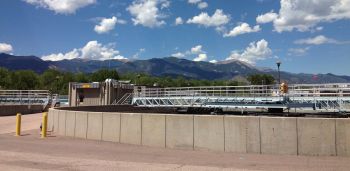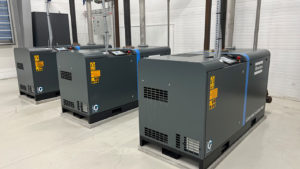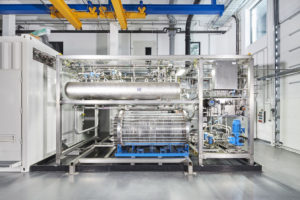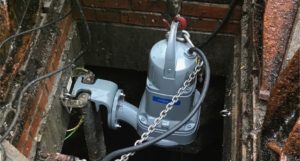Abel´s Diaphragm Pumps are Operating at the WWTP Colorado Springs
The Las Vegas Street waste water treatment plant in Colorado Springs, Colorado dates back to the early part of the 20th Century. In the early 1980s, the City needed to expand the plant and investigated ways to transport primary sludge across town to their Hannah Ranch, now Clear Springs facility 18 miles away for further processing. Brown & Caldwell recommended and installed Abel’s hydraulic piston-diaphragm pumps for this service.

City of Colorado Springs WWTP Las Vegas Street (ABEL GmbH & Co. KG)
The Abel 404 series pumps easily handle a total flow of 400 GPM against 400 PSI service required for this duty. At these flow and pressure ranges, Abel’s technology was the preferred choice and the pumps continue to deliver 30 years later.
Given this success and with an eye to reducing operating and maintenance cost, the City focused on other positive displacement pumps in their plant. Rotary lobe, progressive cavity, and peristaltic pumps were being used to pump abrasive slurries. However, these pump designs have close-tolerance clearances that promote and accelerate abrasive wear.
The plant replaced (20) rotary lobe pumps with (10) Abel EM electric-diaphragm pumps on primary sludge service. The result was improved maintenance and more efficient operation. Subsequently (2) rotary lobe pumps used for dissolved air-flotation duty were replaced with large Abel EM pumps resulting in much improved maintenance characteristics. (4) more Abel EM pumps were added for thickened sludge transfer.
Additionally, the North Side WWTP in Colorado Springs built in the mid-1990s features some (13) Abel EM pumps used on sludge transfer services. The Clear Springs (Hannah Ranch) facility still receives the plant product from Abel piston-diaphragm pumps 18 miles away but has added (11) large Abel EM pumps to their process and plans to acquire (4) more presently.
Abel’s EM series pumps are the most efficient of any positive displacement design. The pumps can be run dry indefinitely. There are no tight places that slurry encounters in its path through the pump. Therefore, the Abel EM pumps are less subject to abrasive wear than any competing positive displacement design. Repair parts are in stock and consist of only diaphragms, check balls, and seats.
Source: ABEL GmbH







